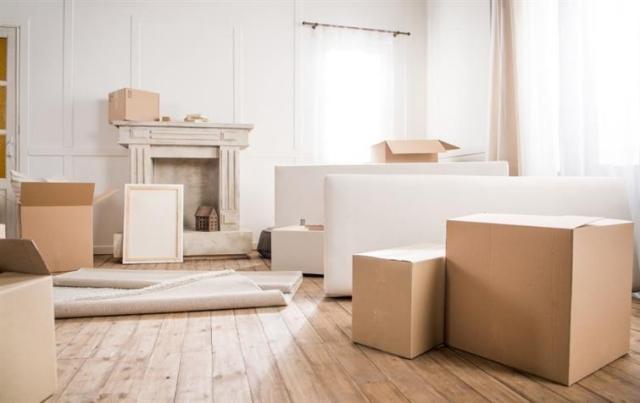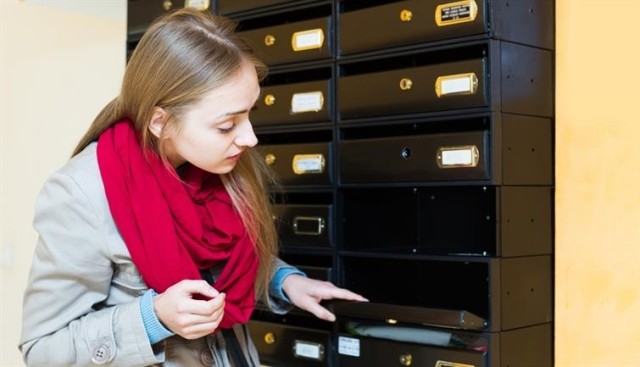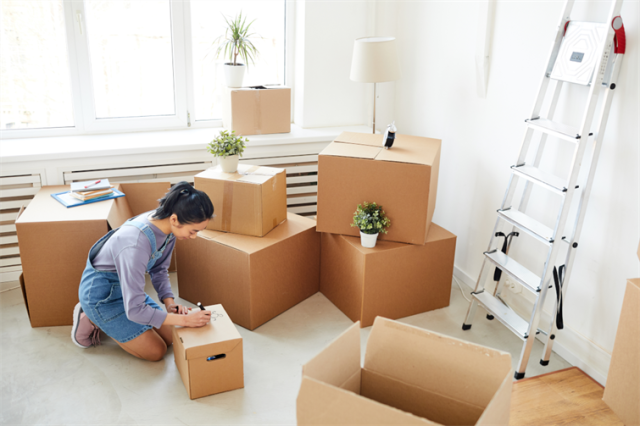Whoa! That was sudden. Whether it’s a new job opportunity, family circumstances have changed, or something else unexpected happened, you now have to pack up and move – and in two weeks or less! But how?
Moving experts say that a move is typically an eight-week process. Your move time is now cut by 75 percent. Moving in two weeks or less begins with proper planning and is followed by a quick execution. Here’s how you can do it efficiently.
Two Weeks Before the Move
The days leading up to moving day can be a stressful time for anyone. Make sure you have all of these items checked off to ensure an easy-going day of moving from one apartment to the next!
Find an Apartment
Finding an apartment is something you’ll want to start doing immediately. If you’re unsure of where you might want to live and have friends or family in the area, ask them if you can crash at their place for a couple of days until you get to know the city.
Maybe they know of someone looking for a roommate? See if they can give you their contact information. When you’ve found the right apartment for you, be sure to sign a lease so you can quickly move in!
Hire Movers
Whether it’s a move across town or out of state, hiring extra hands can help ease the moving process. Depending on the time of year, you could see big savings when hiring movers and they get the job done fast. Win-win, right?
Declutter While Packing
Sorting your belongings into three piles will cut down on the number of things you need to pack up. It’s called the three-pile strategy, and you’ll decide what items move with you, what will be donated, and what things will be thrown away.
Doing this will help lower moving costs – plus it’ll feel good to purge those things you don’t need or never use!
Leave Clothes in Dresser
Is your dresser filled with clothes? Of course, it is. Most moving companies allow clothes to remain in the dresser on move-out day. Your movers will wrap the dresser to avoid potential nicks or dings.
Gather Packing Supplies
Ask, borrow, or buy the packing supplies you need to protect the integrity of your belongings during the quick move. Liquor store boxes are great for packing books because of the sturdy materials used to create it. Plastic storage bins and cardboard moving boxes are excellent options for packing up dishes, home décor, clothes, linens, movies, and other items.
Tip for Renters: Line your moving boxes with large multipurpose trash bags. This will help keep the contents of your boxes from getting damaged if your moving day is hampered by rain or snow.
Packing Boxes
Packing boxes will likely be the most time-consuming part of the moving process. Creating a plan of action will benefit you and make the task go much more smoothly. Prioritize what you pack first by room and use of the items. If you have a study and are contemplating what to pre-pack first, opt for books and memorabilia over your computer equipment. That is if those items are what you use less frequently.
Labeling Boxes
Make sure the labels you create for your boxes are legible to those moving your boxes. On a piece of paper (placed inside the box), describe the contents of the box, so you can find what you need faster. See below for an example.
Room: Kitchen
Description: In this box, you’ll find:
- Wok
- 8- and 10-inch fry pans
- 4-quart soup pot
- 2 three-quart saucepans and lids
- 4 wooden spoons
- Ladle
- Wet and dry measuring cups
- Whisk
- 2 trivets
Make a First Night Box
On the day you move into a new apartment you’ll be exhausted. A first-night box should contain all of the items you’ll need to stay comfortable throughout the first night at your new place. You most likely won’t have the time nor energy to unpack on the day you move in. Items to consider packing in this box include:
- Toiletries
- Outfit for the next day
- PJs
- Toilet paper
- Paper towels
- Hand soap
- Paper plates
- Utensil set
- Cup
- Movie and popcorn
Secure Transportation
Moving from a big city to a suburban community? You might need to buy a car to get around. Also, if the city you’re moving to has public transit, you’ll want to research where the closest bus stop or train station is located and look into getting a rider pass.
Two Weeks After the Move
After you’ve settled into your new apartment, there are some things you’ll need to do sooner rather than later. Let’s get started.
Change Your Mailing Address
Inform your bank and creditors that you’ve moved residences. Submit a change of address to USPS and make sure you’ve communicated with the postal service and property manager about forwarding your mail.
Find New Furniture
If you’ve moved into an apartment with a bigger floor plan, you might have some rooms that are unfurnished – that’s okay! The bed is one of the most important furniture pieces to have, so if you have that, you’ll be set for a little while.
Shop around or online for furniture like a table, sofa, console table, side tables, mirrors, and an entertainment stand if you’re in need.
Explore Your New City
Discover your new city by asking your neighbors or looking online to find the local hot spots. Getting suggestions about where to go and restaurants to try can help build-up your list of favorite go-tos in your new town.
Also, be sure to look at reviews and ask for recommendations for doctors, dentists, and veterinarians.
Hopefully, these quick-move tips will be beneficial for you and your two-week-or-less move. If you do your research, delegate some tasks to family and friends, and keep up with the before and after items lists, you’ll be just fine!






